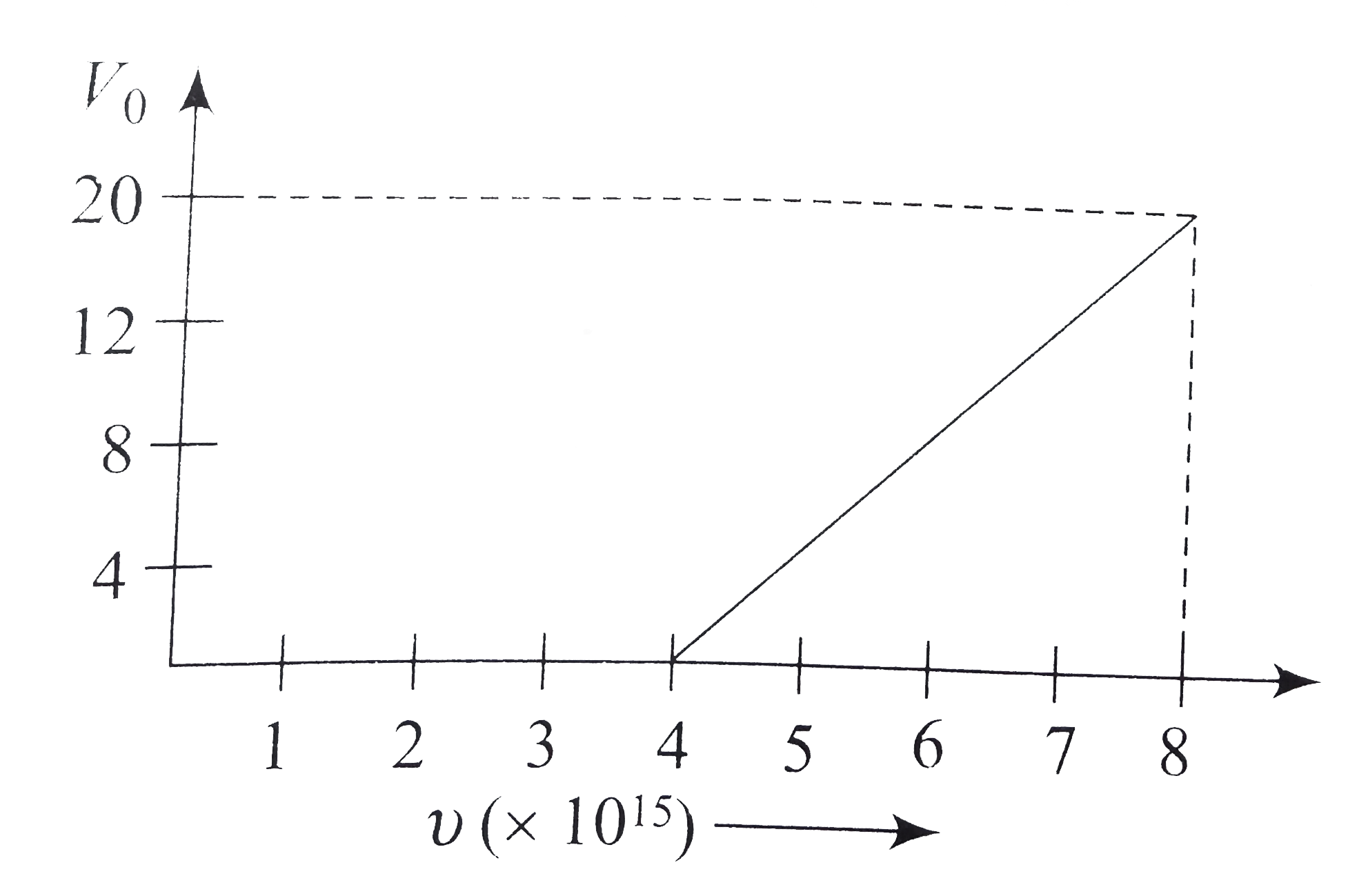The stopping potential in the context of photoelectric effect depends on the following property of incident electromagnetic radiation :
Phase
Intensity
Frequency
Amplitude
To solve the question regarding the stopping potential in the context of the photoelectric effect, we will analyze the relationship between stopping potential and the properties of incident electromagnetic radiation.
1. Understanding Stopping Potential:
- Stopping potential (V₀) is the potential difference required to stop the most energetic photoelectrons emitted from a material when light is incident on it.
2. Photoelectric Effect Basics:
- When light of sufficient frequency (ν) strikes a metal surface, it can eject electrons if the energy of the photons (E = hν) exceeds the work function (Φ₀) of the metal.
- Here, h is Planck's constant.
3. Kinetic Energy of Ejected Electrons:
- The maximum kinetic energy (Kₘₐₓ) of the emitted electrons can be expressed as:
Kₘₐₓ = hν - Φ₀
- This equation shows that the kinetic energy of the electrons depends on the frequency of the incident light and the work function of the metal.
4. Relating Stopping Potential to Kinetic Energy:
- The stopping potential is related to the maximum kinetic energy of the electrons by the equation:
eV₀=Kₘₐₓ
- Substituting for Kₘₐₓ, we have:
eV₀=hν−Φ₀
- Rearranging gives:
V₀=hν−Φ₀e
5. Identifying Dependence on Properties of Radiation:
- From the equation V₀=hν−Φ₀e, it is clear that the stopping potential (V₀) depends on the frequency (ν) of the incident electromagnetic radiation.
- The work function (Φ₀) is a constant for a given material, and the charge of the electron (e) is also a constant.
6. Conclusion:
- The stopping potential does not depend on the phase, intensity, or amplitude of the incident radiation. It only depends on the frequency of the incident light.
Final Answer:
The stopping potential in the context of the photoelectric effect depends on the frequency of the incident electromagnetic radiation.
- Stopping potential (V₀) is the potential difference required to stop the most energetic photoelectrons emitted from a material when light is incident on it.
- When light of sufficient frequency (ν) strikes a metal surface, it can eject electrons if the energy of the photons (E = hν) exceeds the work function (Φ₀) of the metal.
- Here, h is Planck's constant.
- The maximum kinetic energy (Kₘₐₓ) of the emitted electrons can be expressed as:
Kₘₐₓ = hν - Φ₀
- This equation shows that the kinetic energy of the electrons depends on the frequency of the incident light and the work function of the metal.
- The stopping potential is related to the maximum kinetic energy of the electrons by the equation:
eV₀=Kₘₐₓ
- Substituting for Kₘₐₓ, we have:
eV₀=hν−Φ₀
- Rearranging gives:
V₀=hν−Φ₀e
- From the equation V₀=hν−Φ₀e, it is clear that the stopping potential (V₀) depends on the frequency (ν) of the incident electromagnetic radiation.
- The work function (Φ₀) is a constant for a given material, and the charge of the electron (e) is also a constant.
- The stopping potential does not depend on the phase, intensity, or amplitude of the incident radiation. It only depends on the frequency of the incident light.
The stopping potential in the context of the photoelectric effect depends on the frequency of the incident electromagnetic radiation.
Topper's Solved these Questions
- JEE MAIN 2021BOOK - JEE MAINS PREVIOUS YEARCHAPTER - JEE MAIN 2021EXERCISE - PHYSICS (SECTION B)
30 Videos
- JEE MAIN 2021BOOK - JEE MAINS PREVIOUS YEARCHAPTER - JEE MAIN 2021EXERCISE - PHYSICS SECTION A
60 Videos
- JEE MAIN 2021BOOK - JEE MAINS PREVIOUS YEARCHAPTER - JEE MAIN 2021EXERCISE - (SECTION - B)
10 Videos
- JEE MAINBOOK - JEE MAINS PREVIOUS YEARCHAPTER - JEE MAINEXERCISE - All Questions
473 Videos
- JEE MAIN 2022BOOK - JEE MAINS PREVIOUS YEARCHAPTER - JEE MAIN 2022EXERCISE - Question
492 Videos
Similar Questions
Knowledge Check
The magnitude of stopping potential for the photoelectric effect is
Adirectly proportional to the intensity of incident light.Binversely proportional to the intensity of incident light.Cdirectly proportional to the frequency of incident light.Dinversely proportional to the frequency of incident light.The stopping potential of a given photoelectric device is depended on
AintensityBfrequencyCvelocity of photonDwork functionIn photoelectric effect, which of the following property of incident light will not affect the stopping potential
AFrequencyBWavelengthCEnergyDIntensity
In photoelectric effect stopping potential is the measured of the ____of the photoelectrons and it does not depends upon the _____ of incident radiation.
View SolutionDoes the stopping potential in photoelectric emission depend upon the intensity of the incident radiation in a photo cell? Comment on it.
View SolutionIn photoelectric effect, what does the stopping potential depend upon?
View Solution
When a high frequency electromagnetic radiation is incident on a metallic surface, electrons are emitted from the surface. Energy of emitted photoelectrons depends only on the frequency of incident electromagnetic radiation and the number of emitted electrons depends only on the intensity of incident light.
Einstein's protoelectron equation [Kmax=hv−ϕ] correctly ecplains the PE, where υ= frequency of incident light and ϕ= work function.
Q. For photoelectric effect in a metal, the graph of the stopping potential V0 (in volt) versus frequency υ (in hertz) of the incident radiation is shown in Fig. The work function of the metal (in eV) is.
View SolutionThe graph between stopping potential and intensity of light in photoelectric effect is
View Solution